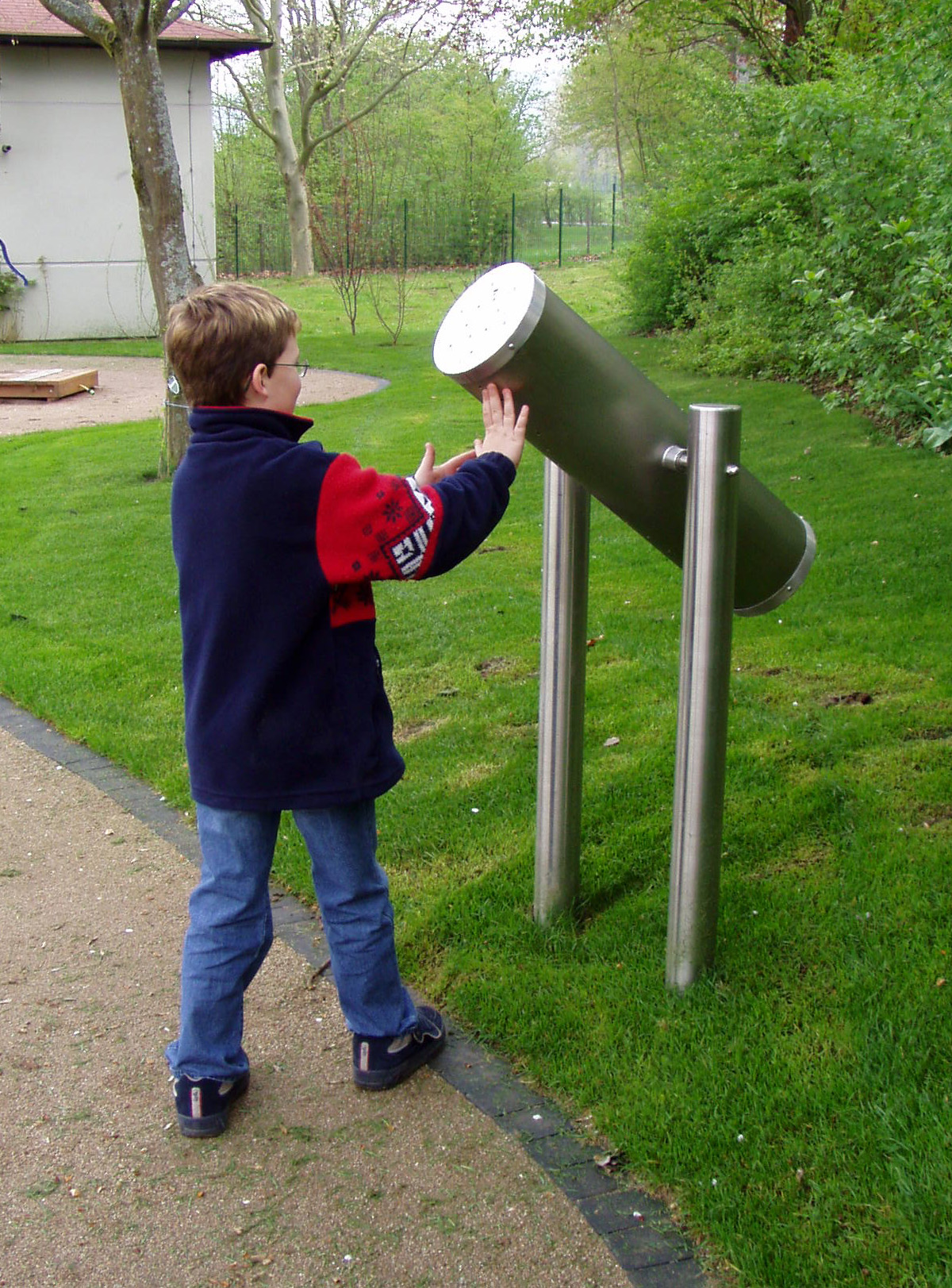
Sound Column, Park City, Compliments of PlaySpace Designs
Few of us like to wait at the bus stop. Why? Because aside from scrolling Facebook or surveying the cracks in the sidewalk, there is not a whole to do. Some of the discomfort we feel may be intentional. A recent article in the Atlantic describes how “homeless deterrence technologies,” design features such as uncomfortable seating at bus stops and subways— benches with vertical slats between each seat, individual bucket seats, large armrests between seats — are deliberately put in place to discourage panhandling and sleeping in public.
Bus Stop Urban Design
Yet shared public spaces vary widely, and in a number of cities more progressive approaches may be taking hold. In his master’s thesis, “Bus Stop Urban Design: Nine Techniques for Enhancing Bus Stops and their Application in Metro Vancouver,” Kevin Zhang, a planning assistant for the District of North Vancouver, outlines a number of ideas for improving bus stop integration and safety, including the addition of bollards and vegetation for traffic separation, comfortable seating, pedestrian scale safety lighting, tree canopies, and access to bicycle parking and public amenities.
As Zhang notes, “Because bus stops are embedded into the neighborhood, improvements will not only benefit the riders, but also the immediate urban realm. A more comfortable waiting environment leads to greater rider satisfaction and shorter perceived wait times, leading to higher ridership. A well designed public space may lead to greater walkability in the area and a safer environment that is more conducive towards active transportation for local residents.”
Park City, Utah
An interesting take on all this can be found in Park City, Utah. According to Heather Todd, the city’s recreation coordinator, in September 2015, the city purchased three functional art pieces—Goric’s Sound Column, Stone Abacus, and Rain Maker—at a total cost of $15,060. By installing them at metro bus stops, she says, the city’s goal is to create non-traditional play spaces for children, while improving the public transit experience for residents and tourists.“The transit system is important to the character of the city, as well as to visitors and the people who live here. Whatever we can do to make it a better experience helps us in the long run by creating more users,” Todd says. The free system serves 1.8 million passengers per year.
Because the infrastructure of Park City is largely built out, with limited land for building new playgrounds, the installations also serve an important recreation function, Todd says. “We’re trying to create place where children have opportunities to play. There’s no more room in the city proper for playgrounds and, to boot, kids are held to such tight schedules, with skiing, lacrosse, and other programs. We’re trying to provide something at a bus stop where a kid can be kid.”
Situated on concrete footings outside the Park City Municipal Athletic and Recreation Center, the Sound Column is a stainless steel cylinder that children can spin to hear the twinkling sound of chimes. The Stone Abacus, as the name suggests, is a counting tool with small rocks on stainless steel rungs. The Rain Maker, which Todd says will likely be installed on Historic Main Street at Town Lift Plaza near a heavily trafficked ski lift that services The Canyons, Deer Valley and Park City Mountain Resort, is a vertically spinning column that makes a pleasant, hushed bell-like sound.

Stone Abacus, Park City, Compliments of PlaySpace Designs
Ground-level Design
All of the pieces are “at ground level,” meaning there is no opportunity to climb them and they do not fall under the same space and resilient surfacing requirements as typical playground equipment. “What turned me on to Goric was that these were educational but free play spaces, and you also don’t have to worry about fall zones. Bus stops are not big, open spaces. You’re limited to a six to ten foot circumference of play area,” Todd says.
The project came together as a result of an internal Park City municipal innovation competition. The city awarded Todd’s idea for interactive bus stop play $20,000, and a second project calling for the replacement all of the city incandescent light bulbs with light emitting diodes (LEDs) captured the remainder of the funding. “The City had $100,000 left over in the general budget. Instead of applying those funds to regular business, they decided to give money to employees and give employees the opportunity to come up with innovation, kind of like a Shark Tank challenge,” Todd says.
So far, Todd is pleased with the results. “My office window looks out at the bus stop, so I can see the Sound Column being used every day as day camps unload. The children will hit it as they pass and stop for a minute as they’re going on their way. And I’ve seen adults playing it just as much. Sometimes it’s fun for adults to have a little humor,” Todd says.
Beyond enhancing bus stops, Goric’s structural art and sound equipment offers potential to add playful elements to pedestrian areas, walkways and other places that typically don’t have playgrounds.

Rain Maker

 RSS Feed
RSS Feed
Recent Comments